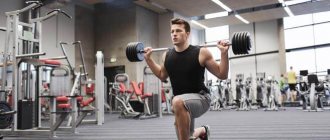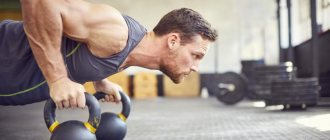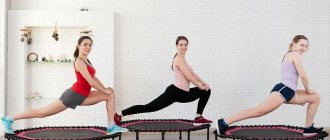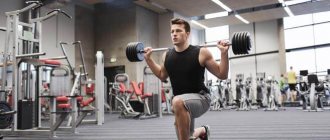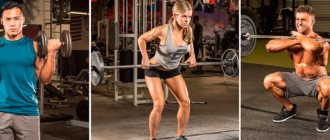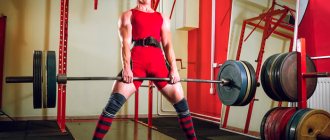In our technological times, many people face the problem of sedentary work. Insufficient physical activity negatively affects the general well-being and appearance of people. Excess weight, poor diet and constant stress are becoming a huge problem for the modern generation.
In order to give your body the desired shape and improve overall well-being, you need to actively engage in sports. The best way out of this situation is strength training. By systematically working on one or another muscle group, you can give your body an appearance that you could only dream of before playing sports.
Many people, especially women, are intimidated by the appearance of athletes involved in professional bodybuilding. But it should immediately be noted that pumped muscles and bulging veins do not appear immediately after you pick up a barbell or dumbbells. Without additional stimulants for muscle growth, very few people are able to achieve such results, but a properly selected set of strength training will definitely have a positive effect on both your appearance and overall well-being.
Strength training is physical exercise performed using weights. If treated correctly, they will be a means for a person to obtain significant functional benefits and improve overall health.
Strength Training Goals
By doing strength training, you can achieve adaptation of your body: - to the perception of maximum short-term loads; — improve endurance, in particular, to long-term moderate-intensity loads; - increase muscle volume.
By performing strength training, a person improves the condition of his body, which consists of the following: - muscles are significantly strengthened; tendons and ligaments become resistant to stress; training is also beneficial for the bones of the skeleton; their interaction improves; — the risk of damage to muscles, bones, tendons, and ligaments during stress is reduced; - there is an increase in bone tissue density; - metabolism increases; - cardiac function improves; - good cholesterol increases.
Technique and methodology of strength training
The main method of strength training is to additionally increase weight. In this case, various exercises and special equipment are performed, in particular, those that allow the development of certain muscle groups.
Load progression
Thanks to the technique associated with a constant increase in load, the growth of strength and volume of the athlete’s muscles accelerates. This happens, oddly enough, due to constant microtraumas to the muscles, which they “oblige” to intense heavy training. The body is trying to “heal”, but at the same time, not only the restoration of damaged areas occurs, but also the development of the muscles themselves - the body creates a kind of reserve for their strength, acting with reinsurance against possible overloads.
A strength training plan to increase loads can be built in different ways: - lifting heavy weights; - increasing the number of approaches to one weight and sets or the number of repetitions; - increasing the number of different exercises that load one muscle or their group; — reducing pause time in approaches.
Separate training
The essence of this approach to strength training is that the athlete in each workout works only 2...3 muscles or their groups.
Injury Prevention
Now let’s talk about what the consequences of inept strength training can be. Of course, it is difficult to harm yourself by exercising at home without weights. But those who work with hardware, and everyone else, should pay attention to some important points:
- Know your diagnoses. Some of them can really be ignored, but others in certain conditions pose a threat to life. You should consult your physician before vigorous strength training.
- You should not exercise on a full stomach.
- Make sure that the room maintains a normal microclimate. There should be no drafts or stuffiness, the temperature should be comfortable.
- In the gym, until you have mastered the technique of basic exercises and given yourself the necessary stretches, you do not need to lift heavy weights.
There are many strength training methods. Experiment, choose what suits you and gives results in your particular case. And, of course, remember that you only have one health, and you train to strengthen it, not destroy it.
Benefits of Strength Training
Most of the benefits of strength training come from the goals that you do it for. By doing them, a person: - becomes the owner of large muscle mass; - increases muscle tone; - improves your appearance; - increases your endurance; - increases bone density.
Strength training for men strengthens their muscles and improves their attractiveness to the fairer sex. Many representatives of the latter also engage in them. Although for women, strength training, due to a lack of testosterone, will not be able to solve the muscle problem, it will allow them to become the owners of a firm, toned physique and, of course, become stronger.
Strength training helps in losing weight and losing excess weight. This is explained by the direct connection between the volume of muscle mass and the rate of basal metabolism, which is responsible for burning fat.
Strength training has been proven to have a positive effect on the aging process, which involves loss of muscle mass. By maintaining the latter, older people look better than their peers, they do not develop osteoporosis, and they more often avoid disability.
Among the benefits of strength training is always an improved mood. This happens due to the increased levels of norepinephrine, serotonin, and dopamine in the body, which occurs during such activities.
Strength training is an exclusively male activity
Despite the fact that exercise with heavy weights is considered a man's activity, it is women who need it more. After all, the female body, in general, contains about 25% fat and only 15% in the male body. The male hormone testosterone is responsible for the rapid growth of biceps and triceps. Due to its low levels and high levels of the hormone estrogen, muscle mass in women forms much more slowly than in the stronger sex. Often girls are afraid that heavily pumped muscles will not look very feminine. There is nothing to fear here: unless you take special medications and biological supplements, a woman is unlikely to become like a bodybuilder.
Safety during strength training
In strength training, movement trajectories are very important and must always be controlled. Failure to comply with them, as well as other safety measures, can lead to injury to the athlete or more serious consequences.
Of the minor, temporary, but most common injuries during strength training, the most common are: - sprains to which muscles, ligaments, and tendons are exposed; if you receive it, you should immediately stop exercising, otherwise it may become chronic; - skin stretch marks, also called stretch marks; this happens more often due to the rapid growth of muscle volume; it is necessary to reduce the degree of load increase, the number of approaches, etc.
Strength training equipment
You can do strength training: - without additional weights at all (for example, do pull-ups, push-ups); — with a minimum set of weights (dumbbells, weights, barbell); - using a large number of different weights and special exercise equipment.
Equipment for strength training can be: - for weights and resistance - barbells, dumbbells, weights; — simulators: — power: they can be mechanical, pneumatic, gyroscopic, hydraulic; as an example - Smith frame; — gymnastic: they are represented by harnesses, balls, TRX loops, rollers; — for fitness: there are many of them, they, for example, can be exercise bikes, treadmills; — sportswear: athletes, when performing exercises, use vests, overalls, gloves, shoes, hips; they should all be comfortable and not be an obstacle to movement; — devices: used to simplify and conveniently work with weights: most often they use belts, straps, backpacks, belts, chains; — in special training they use, for example, an Indian bat or a balancing board.
Inventory
After training, the equipment used must be disassembled and stored in specially designated places. This is necessary for the training of the athletes who come after you, and you yourself will not run around and look for lost exercise equipment and weights.
Contraindications to strength training
Even if you are in excellent health, it is better to consult a doctor when deciding to engage in strength training. Based on the available information, it is better not to start such exercises: - people with heart disease; especially if the problems are significant; - for gastrointestinal diseases; - with damage to the pulmonary system; - with significantly lost vision; - with demineralization of bones and their increased fragility; - if there are problems in the musculoskeletal system; - in the presence of fractures, bone damage; - within a year after the operation; - for endocrine diseases; - for diseases of the kidneys, gall bladder, liver; - with existing varicose veins; - for dislocations, arthrosis; - for neuralgia.
Strength training programs
With any program, at the very beginning, a warm-up is done before strength training. It will allow you to warm up your muscles and prepare them for the load. Stretching after strength training is also mandatory - it will relieve tension from the muscles and make them more elastic.
Training without weights
This program uses only the weight itself. Exercises for walking in it can be as follows: 1. Layer position with hands felt down. When performing, they jump, spreading their arms to the sides and moving their feet to the sides and lower to the floor in this position. During the second jump, they return to the starting position. Do the exercise 40 times. 2. To perform this, use some kind of elevation. They stand next to the last one, bend their knees, and move their arms back. They jump onto a hill, then jump back from it. Number of repetitions: 30. 3.Run in place with slight bouncing and high raising of bent knees. Do everything 40 times. 4.Fast and continuous squatting for 40 seconds. with arms thrown forward. 5.10 push-ups from the floor with your hands with your feet resting on your toes and your back straight. 6.10 jumping up from a squatting position with your palms resting on the floor. 7. Lying position with your back on the floor. 20 quick lifts of the torso and legs towards each other. In this case, one leg remains extended, the second is bent at the knee, which is touched with the elbow of the bent opposite arm. 8.Lean your hands on the floor, back straight, legs extended. Alternately, take 10 steps forward with your feet with effort and return them back.
A set of strength exercises for all muscle groups
The concept of “strength exercise” does not even mean any specific movements. This is the definition of the mode in which the muscles of the body work to perform a movement. Any load that exceeds the anaerobic threshold is considered power. Characterized by high intensity but short duration. Simply put, strength training is not always about lifting weights. For example, air squats without weight are also considered strength movements, although they do not use weights.
Based on the definition, it becomes clear that there can be a huge number of exercises in strength training. Even walking can be made stronger by wearing a vest that will load the muscles above a certain threshold. Based on this principle, any exercise should be considered to develop strength abilities. List of basic and most effective movements for each muscle group.
Back
Taking into account the anatomy of the back muscles, almost all movements for this muscle group are represented by rows. This is due to the function of the lats, which occupy almost the entire array of the group.
Pull-ups
This is the main exercise for the back muscles.
Works almost all areas and is the ultimate tool for developing strength. Technique:
- Grasp the horizontal bar with a wide grip (wider than shoulder level). You can use forward or reverse grips;
- Raise your body up, bending your arms at the elbows and shoulders;
- Try to bring your chin slightly above the level of the bar;
- Lower yourself down, keeping your shoulders tense.
Upper block pull
An exercise that has a similar movement pattern to pull-ups but allows for varying weights.
Great for back training for those who cannot do pull-ups or work with lighter weights. Technique:
- Grab the bar with a wide grip, keeping your back straight;
- Begin to pull the bar towards your chest, spreading your elbows to the sides and slightly back;
- Without pausing, return to the starting position at a slow pace.
Bent-over barbell row
Bent-over rows can be used with either a barbell or a dumbbell to alternately work the lats.
Technique:
- Stand straight with your feet shoulder-width apart. Lean forward while keeping your back straight. Hold the barbell with your arms outstretched;
- Begin to pull the bar towards your lower abdomen;
- Without pausing, return to the starting position.
Hyperextension
Direct and reverse hyperextensions are some of the best exercises for developing lower back strength.
Performed in a simulator. In the classic version, the legs are fixed, the body tilts down. In reverse, the upper body is fixed, only the legs are raised. Both movements provide stress to the lumbar region, which can be controlled through the number of repetitions or the use of additional weight.
Horizontal block thrust
Similar to other rows, but performed in a sitting position.
It has its advantages, as it allows you to stretch the lats more strongly. When performing deadlifts, it is important not to confuse the movement with rowing and not to swing your body. Only a slight wiggle is allowed at the starting point to stretch the lats.
Breast
For the chest muscles, the main strength exercises are represented by three movements, with the exception of various variations.
Bench press
The main movement develops all the muscles of the shoulder girdle and the strength of the upper limbs.
Ideal for comprehensive muscle development. Can be performed with a free barbell or in a Smith machine. The exercise itself consists of moderately lowering the bar into the lower chest until it touches lightly, followed by quickly lifting the weight above you.
Dumbbell press
The movement pattern is almost the same as when working with a barbell.
But by using separate weights in each hand (with a horizontal bench or set at an angle), you can achieve the involvement of more muscles. Using dumbbells better develops the pectoral and stabilizer muscles, and also stretches the chest better due to its greater amplitude.
Dumbbell Flyes
Another exercise that fan pecs need to develop.
Excellent stretches the muscle and loads the lateral areas of the chest plates. Breeding can be done on a horizontal bench or at an angle.
Shoulders
There are many exercises for developing shoulder strength; among the main ones there are key movements that are aimed at working out each bundle of deltas.
Swings with dumbbells
The most common movement.
Swings in front of you are aimed at developing the front head, and swings to the sides - the middle one. Performed in a standing position, excluding body swaying and inertia. It is important to swing strictly to the level where the arm is parallel to the floor.
Bent-over dumbbell fly
The best movement for working out the rear deltoids, which are most often lagging behind.
Allows you to improve your posture. Technique:
- Take dumbbells in your hands and lean your body forward with a straight back. Feet shoulder-width apart (for additional fixation, you can rest your forehead on the back of the bench);
- Place your arms out to the sides with your elbows slightly bent. Try to spread your arms as far apart as possible;
- Without pausing, slowly return your arms down and repeat the movement.
Seated barbell press
The safest compound movement for developing total shoulder mass.
Loads all three beams, although the back one to a lesser extent. It is better to perform the movement while sitting to reduce the load on the spine and better fix the body. Alternative exercises to develop shoulder strength include the military press and the push press.
Legs
A set of exercises to develop leg strength has perhaps the largest number of movements. Among the most effective are:
Squats
This exercise is considered the best movement for overall strength development.
It works almost all the muscles of the body, although the main load falls on the lower body, mainly the quadriceps. Technique:
- Place the bar on the back of your shoulders and remove the bar from the rack, step back and place your feet shoulder-width apart;
- Start squatting down, bending your knees. Try not to extend them beyond the level of your socks (exception is people with long lower limbs). The back is kept straight;
- Try to squat down to at least a level where your thigh is parallel to the floor, and then quickly rise with your body straightened.
Bench leg press
A useful exercise where the weight “presses” from above.
This allows you to lift heavy weights and put less strain on your spine. To shift the load on the quadriceps, place your feet at the bottom of the platform; to work the back of the thigh, place your feet at the top of the platform.
Leg flexion and extension
Two similar exercises that are aimed at isolating the hamstrings and quadriceps.
Extension is performed while lying in the simulator (there are simulators for extending legs while standing), and flexion is performed while sitting. It is important to ensure that you bend and straighten your knees completely.
Lunges
A very versatile movement with lots of variations.
Allows you to work out any areas of the lower body. Use the following types of lunges in your training regimen:
- Forward;
- Back;
- To the sides with the legs behind the leg;
- With a step to the side;
- Bulgarian.
Leg abduction and abduction in the simulator
Two exercises with a similar movement pattern. When spreading the legs, the outer part of the thighs is worked out, and when bringing the legs together, the inner part is worked. It is especially useful for women, as it allows you to work out all areas of the legs, remove sagging and cellulite.
Calf raise
This exercise works the calf muscles.
To do this you need to stand on your toes. Can be performed in a standing or sitting position (the sitting option additionally includes the soleus muscle in the work). Lifts can be done either in a machine or with free weights or even without weights.
Biceps
There are not many movements for the biceps brachii muscle, all of them are aimed at flexing the arm.
Barbell curl
A classic movement for working the biceps.
Technique:
- Stand straight with your feet shoulder-width apart. Keep the weight on outstretched, relaxed arms;
- Begin to bend your elbows, lifting the weight to shoulder level;
- After a short pause, slowly lower the barbell to the starting position.
Seated dumbbell raise
An excellent movement that gives the greatest stretch to the arm when performed.
It is done on a bench with a back set at an angle of 40-45 degrees.
Triceps
The triceps brachii muscle uses a larger arsenal of movements than the biceps muscle. Among the main ones are:
Close grip bench press
Performed in the same way as a regular bench press, but with a narrower grip.
This position of the hands puts more stress on the triceps. You should also lower the bar slightly lower than your chest than with a wide grip.
Standing arm extension
An excellent movement for both power work and pumping.
Narrow (straight) or cable handles can be used to create an all-over load on the target muscle.
The benefits of strength training
First of all, moderate physical activity creates a harmoniously developed figure and improves health. A properly selected method of strength training strengthens the cardiovascular system, activates the body's metabolism, promotes weight loss and increased performance.
Well-developed muscles stimulate intense metabolism in the body, which affects overall well-being. People who exercise intensively look young and fit even at 40 years old. A poorly developed muscular system reduces the overall metabolism in the body and leads to premature aging.
If muscles do not perform their functions for a long time (lack of physical activity), then they are eventually replaced by adipose tissue. This leads to excess weight and a greater likelihood of injury. A poorly developed muscular system is not able to fully protect joints and bones from unexpected physical impacts. A simple fall on slippery ground can result in a ligament rupture or fracture.
A harmoniously developed body is the key to health.
Exercises for strength training
Before you begin an intensive strength training session, you need to set an end goal. If you have a clear idea of what result you want to achieve, then building a strength training plan is much easier.
Strength training programs for women differ in many ways from those for men. There is also a significant difference between strength training for weight loss and weight gain. Therefore, before starting a lesson using one method or another, it is necessary to consult with professional trainers.
The choice of strength training program also depends on where it takes place. If during strength training in the gym the set of exercises will include both work with free weights and exercise machines, then training at home introduces a number of restrictions.
Strength training at home
strength training for home conditions is developed on the principle of using body weight. These complexes sometimes include exercises with dumbbells and a barbell. Strength training and running are often combined.
The advantages of exercising at home include:
- Possibility of training at any time;
- working with body weight and dumbbells develops overall coordination of the body and reduces the likelihood of injury;
- using music that you like during strength training;
- saving money.
Flaws:
- lack of instructor;
- there is no opportunity to work with heavy weights (lack of insurance);
- there is no opportunity to focus on working on a specific muscle group (lack of special equipment);
Recommendations and tips
Strength ability is the cornerstone of physical fitness for anyone. Progression in strength growth takes a long time as it occurs at a slow pace.
Basic recommendations:
- Use progression of the load, without it it is impossible to consistently develop strength indicators;
- Remember to rest and recover. Muscles grow not during exercise, but during the rest period;
- Always warm up before any workout;
- Try to divide the weekly volume of load into 3-4 workouts per week;
- If you can train only 2 times a week, it is optimal to use the fullbody system or alternate working out the entire upper and lower body on different days;
- Always aim for 3-5 sets. 8-12 repetitions for developing volume and 4-6 for developing strength.

